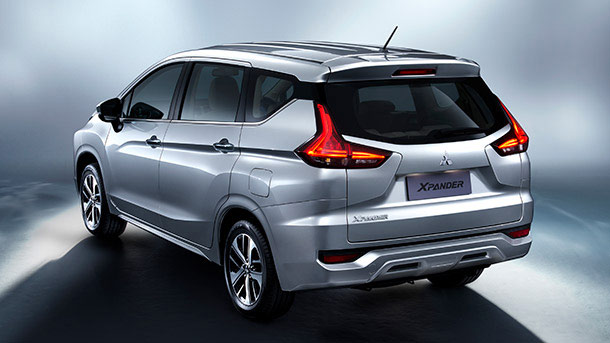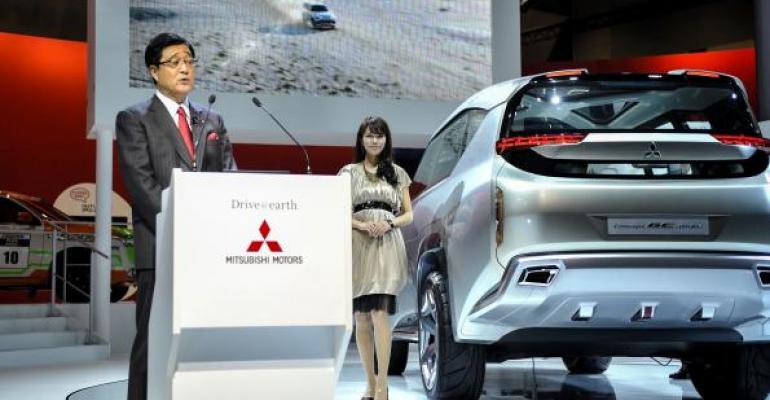TOKYO – Two years ago, Mitsubishi Motors was on track to report record earnings and begin the next stage of a decade-long restructuring. Then the bottom fell out after the disclosure of mileage cheating in its minicar lineup.
Earnings, which rose to a record ¥138.4 billion ($1.3 billion) in fiscal 2015, would plunge to ¥5.1 billion ($47 million) the following year including a ¥31.6 billion ($291 million) loss during the first 6-month period.
Many thought Mitsubishi CEO Osamu Masuko, who had personally overseen the restructuring effort as the automaker shuttered unprofitable plants and rebuilt its balance sheet, would resign in spring 2016 to take responsibility for the scandal.
It didn’t happen as Nissan, Mitsubishi’s partner in the mini-vehicle segment, extended a lifeline and Carlos Ghosn, Nissan’s CEO, made it a condition that Masuko stay on the job to manage the crisis and next stage of restructuring – and, not stated, protect Nissan’s ¥237 billion ($2.2 billion) investment for which it would acquire a 34% equity stake.
Details of the agreement were announced at a Tokyo press conference several weeks after the April 2016 disclosures at which time Nissan, the Bank of Tokyo-Mitsubishi UFJ, Mitsubishi’s main bank, and two other Mitsubishi group companies sent senior executives to help fortify the automaker’s management. Nissan assigned the former head of its global R&D operation to Mitsubishi; Nissan’s chief performance officer would join later as chief operating officer.
Now, less than two years since the disclosures and resulting 37% decline in domestic sales over the next six months, the automaker is two-thirds of the way back to previous profit levels and has a new midterm business plan in place to build a foundation for sustainable earnings.
The plan, called “Drive for Growth,” was announced in October. Its targets include a 30% increase in unit sales and revenues by fiscal 2019 along with a 6% operating profit as a percentage of sales. These goals are to be achieved while investing ¥600 billion ($5.5 billion) in R&D and facilities, double previous levels, launching six all-new models and growing its business in Southeast Asia, China and the U.S.
To achieve these targets, Mitsubishi will collaborate with Nissan and Renault, Nissan’s other alliance partner, in purchasing, platform development and manufacturing.
Damage to Brand Being Repaired, CEO Says
Masuko declares the automaker first must “win back trust” following mileage-cheating disclosures at its main car-development center in Okazaki, Aichi prefecture.
“We’re beginning to see signs that damage to our brand is being repaired,” he says in an interview with WardsAuto.
An audit of the automaker’s Okazaki testing procedures found the violations did not apply to export models or cars sold in Japan, only to four 0.66L minicars for the Japanese market – the ek Wagon and ek Space and Nissan-badged Dayz and Roox. An estimated 625,000 units had to be recalled at a cost of ¥165 billion ($1.5 billion) to cover tax-credit refunds, losses incurred by suppliers and other recall-related expenditures.
“Second,” according to Masuko, “is to put ourselves on a path to a V-shaped recovery.”
Based on Mitsubishi’s third-quarter 2017 financial results, the automaker clearly is on track. Earnings as a percentage of sales totaled 4.3% and are projected to reach 4.5% when the automaker closes its books in March. At fiscal-2014 and fiscal-2015 peak levels, earnings exceeded 6.0%.
“Third,” says Masuko, “we must successfully launch new vehicles. If our new vehicles aren’t successful, the plan won’t succeed.”
So far, so good.

Through January, the automaker had received orders for 58,000 of its new Indonesian-built multipurpose van, the Xpander. In the same timeframe, it had exported 4,000 Eclipse Cross SUVs from its Mizushima plant in Japan to Europe, North America and Australia while receiving 3,000 advance orders from Japanese customers.
Masuko, brought in from Mitsubishi in 2004 after the former DaimlerChrysler sold its stake in the automaker and recalled its management team to Stuttgart, adds that Mitsubishi expects to see bottom-line synergies of ¥25 billion ($230 million) in the current fiscal year from joint purchasing with Nissan and Renault.
Through fiscal 2019, when the plan is fully implemented, the automaker estimates savings of more than ¥100 billion ($943 million) in procurement and R&D.
Analysts are skeptical about how the alliance pieces will fit together. Nevertheless, they feel some of the possibilities make sense, at least on paper: in Southeast Asia, where Nissan is weak and Mitsubishi is relatively strong; in all-electric vehicles, where Mitsubishi, although an early leader, is too small to compete and Nissan, because of the success of the Leaf EV, is a natural partner; and in China, where Mitsubishi is weak and Nissan relatively strong.
Mitsubishi on its own will focus on all-wheel-drive technology and SUVs and, for the moment, on plug-in hybrids.
With the first trimester of the “Drive for Growth” plan approaching completion, where does the automaker stand in achieving its targets?
In February, Mitsubishi revised its fiscal 2017 earnings forecast upwards and now projects a 4.5% operating margin on earnings of ¥95 billion ($894 million). Meanwhile, it registered a 10% increase in global sales between January and December to 1.0 million units, including a nearly 30% gain in Asia. On a unit basis, it already is close to 2015 levels.
By the end of fiscal 2019, management expects its five best-selling global models – the current top three are the Triton pickup truck, Outlander and RVR – to account for 70% of sales.
Koji Ikeya, Mitsubishi’s chief financial officer brought in from Tokyo-Mitsubishi UFJ Bank, says the root of the problem two years ago was that the automaker had not invested sufficiently in research and facilities. In fiscal 2014 and fiscal 2015, it spent only 3.0% of revenues on capital expenditures and 3.5% in R&D.
“We had just bought back (in January 2014 a reported $2.5 billion of) preferred stock from other Mitsubishi group companies so that we could offer a dividend again, the first since 1997, and didn’t invest sufficiently in R&D and CapEx. We have since rectified the problem, and because of Nissan’s cash infusion our balance sheet isn’t bad.”
Mitsubishi Could Grow in China Using Nissan Plant Capacity
The automakers are in process of expanding their joint platform development activities, with Mitsubishi taking the lead in Southeast Asia and Nissan in most other markets. They will continue to collaborate as equal partners on 0.66L mini-vehicle production in Japan.
Nissan will head the development of the next-generation ek Wagon, ek Space, Dayz and Dayz Roox, the four models at the center of the mileage-cheating scandal.
Unconfirmed, Nissan will source vehicles from Mitsubishi operations in Thailand, Indonesia and the Philippines, where the three-diamond brand is strong and the automaker has expanded capacity in recent years.
In China, Mitsubishi needs more production capacity. It currently partners with Guangzhou Automobile Group.
“Clearly, we need more,” admits Ikeya. “And because of the alliance, we now have the option to utilize Renault and Nissan capacity.” That would possibly mean using Nissan’s Dongfeng Motor connection.
Ikeya does not rule out joint production in the U.S., but it would come after China. “Of course we wouldn’t do it by ourselves.”
In 2017, Mitsubishi sold 129,000 vehicles in China, up 56%, on the strength of its China-built Outlander. In Southeast Asia, the automaker’s main market, sales grew 17% to 242,000 units, while in the U.S. it sold 104,000, a 10-year high.
Ultimately, Mitsubishi hopes to attain a 10% share in the Southeast Asian region on sales of 310,000 units.
Mitsubishi will turn to Nissan for advanced technologies such as autonomous driving. Analysts expect Nissan eventually to take the lead in electric vehicles although, for the time being, Mitsubishi will be responsible for plug-in hybrids, notably CUVs and SUVs in the C-D segment.
Details of new electric and hybrid models have yet to be disclosed, although the now-expanded Renault-Nissan-Mitsubishi alliance aims to slash battery costs 30% by 2022 while introducing 12 new all-electric vehicles. In the EV segment, each automaker is committed to sharing platforms for 70% of sales.
Ikeya admits Lithium Energy Japan, the automaker’s 10-year-old battery venture with GS Yuasa, has never made money. And while Ikeya won’t speculate about whether Mitsubishi would switch to Nissan’s battery suppliers, he indicates Lithium Energy Japan likely will have to compete for the automaker’s business in the future.
Masuko is upbeat about Mitsubishi’s outlook. “We can’t do everything in one year, and this is still Year One. But by working with Nissan and Renault, we can reduce the time needed to make reforms. I think we’re going in the right direction, and that is important.”





